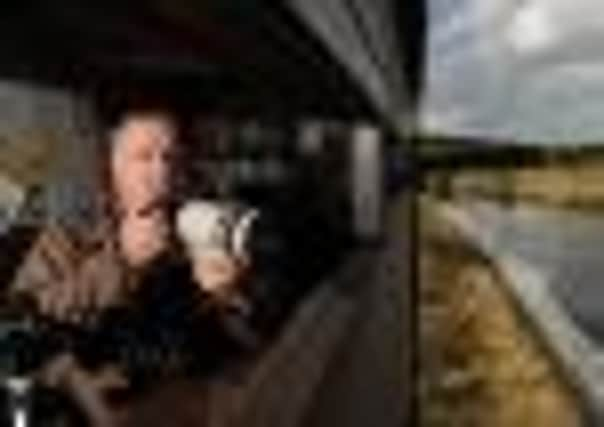Video: Photographer who chronicles daily life online


For 1,000 consecutive days since, Lawrie Phipps, from Leeds, has captured a snapshot of his life on camera and shared it with the world. Whether a spectacular panoramic view, a rare bird wheeling in the sky or simply the Lego men on his desk, it is an amazing collection of images reflecting modern life.
Many of them are firmly rooted in this region – a Dales landscape, street performers in Leeds or scenes from the daily commute – but Lawrie has also photographed on his extensive travels, with Canada, Connecticut and Malta among the places featured in the album.
Advertisement
Hide AdAdvertisement
Hide AdThe images posted on the photo-sharing website Blipfoto leading up to the 1,000th day milestone illustrate his great passion. Lawrie has recently been in Malta volunteering at Birdlife’s Raptor Camp, which helps to protect birds of prey from illegal poachers.


Malta is an important stepping stone on the migratory route between European breeding and African wintering grounds, with 170 species appearing there regularly.
But it also has the highest concentration of animal hunters anywhere in the European Union – with 47 per square kilometre.
“The guys who work for Birdlife Malta are doing a great job and this year about 60 of us have been out, most of us are birders or photographers or both,” said Lawrie.
Advertisement
Hide AdAdvertisement
Hide Ad“I like the fact that I can use my skills as a photographer to help, but sometimes it can be overwhelming when you see such cruelty and wanton disregard for wildlife.”
Online photo-sharing has helped Lawrie tell the story of the annual struggle between conservationists and poachers at the start of the Mediterranean island’s hunting season.
Some entries from September showed poachers stalking across fields and wasteland hunting for kestrels, egrets and night herons, or fleeing the scene in 4x4s or on mopeds.
It is hoped that by capturing these people in the act, they can be stopped.
Advertisement
Hide AdAdvertisement
Hide AdThe 1,000th picture, or “Blip”, shows a downed Eleonora’s falcon. More recent entries have featured hoopoes and marsh harriers with damaged wings.
It was this desire to protect bird-life that first persuaded Lawrie to pick up his camera.
“I’ve been interested in photography for a long time, since I was a teenager,” he said. “Because I’m a keen birdwatcher and have a love of wildlife, I tended to only do images of these subjects.”
He added: “What I found with Blip is that it forced me to look for images out of my comfort zone, and I now do more portraits and abstracts.
Advertisement
Hide AdAdvertisement
Hide Ad“I try to think more where I am and what I am doing. I try to reflect my day, my feelings in the image. My view of my environment has changed. I often look around at the most mundane scenes and think ‘Is there an image here?’”
Despite some initial nerves, Lawrie’s pictures have been well received.
“It was difficult to put yourself up in the public domain at first as I was nervous what people would say about my images, but they tend to be mostly nice comments,” he said. “That then became irritating as I wanted to improve and that needed honest feedback.
“I have a lot of friends in the community, some of whom I only know through Blip and some I’ve met face to face. I think they like my images, and I hope they will tell me when they don’t.
Advertisement
Hide AdAdvertisement
Hide Ad“The pressure to deliver a good shot each day was only there for about the first 100. After that you realise that the image is only a reflection of your experience and you do it for yourself.
“Sometimes I see something and it just pops up as the blip, sometimes I struggle to choose. But as long as you have a camera, or camera phone you can grab some images.”
Lawrie’s collection can be viewed at www.blipfoto.com/lawrie.